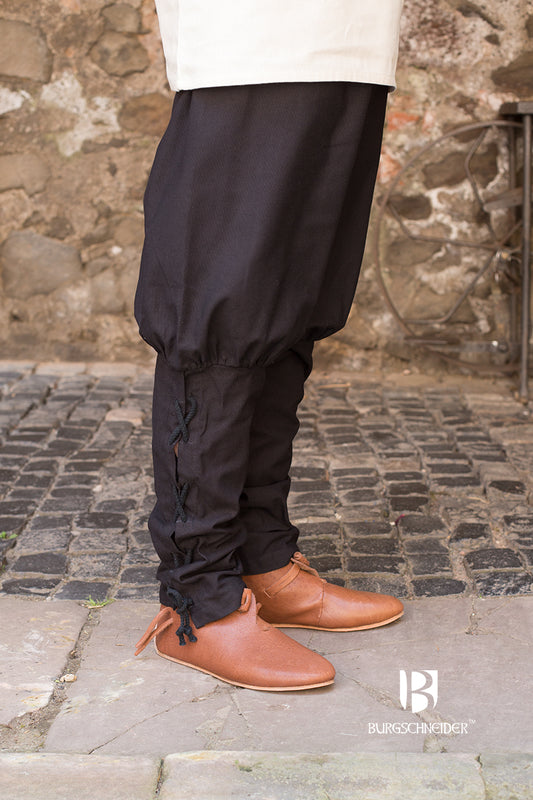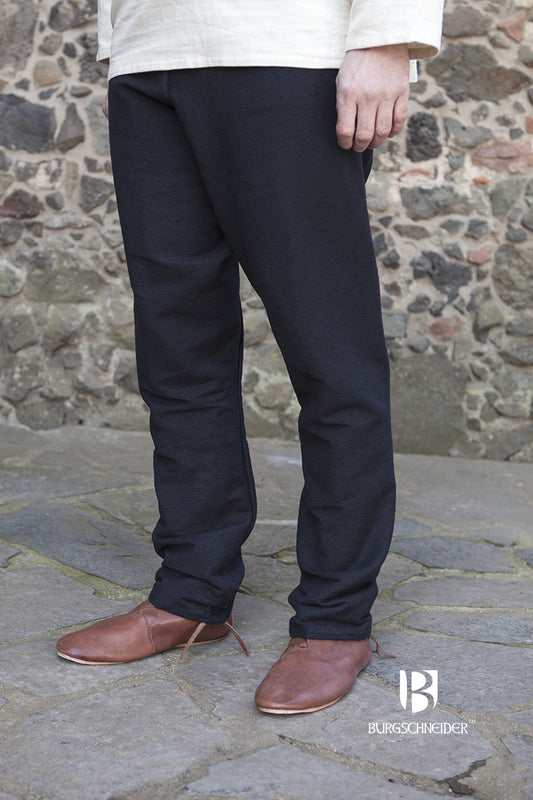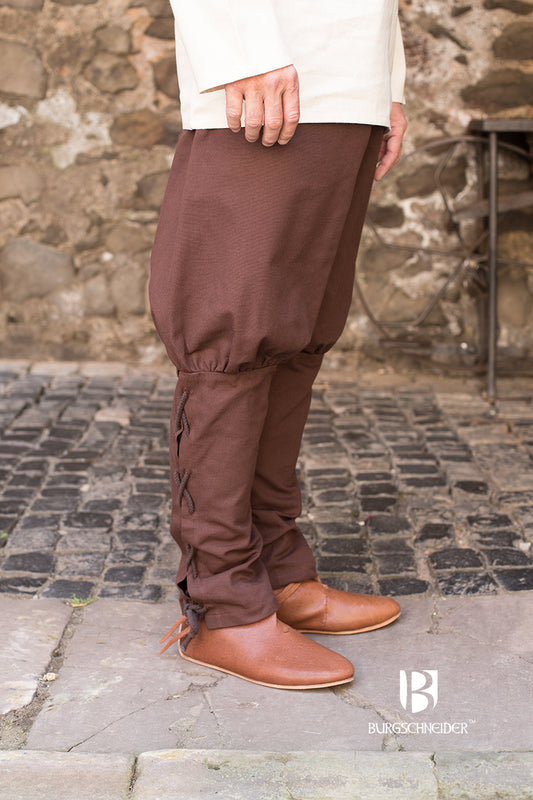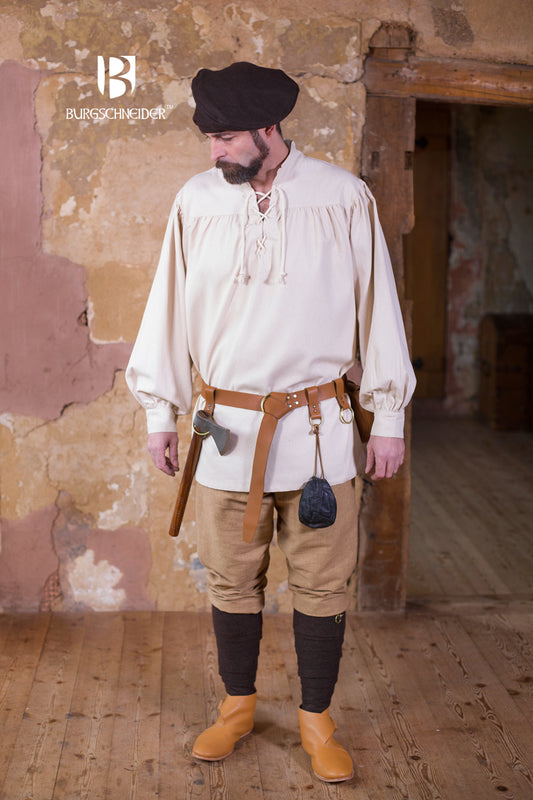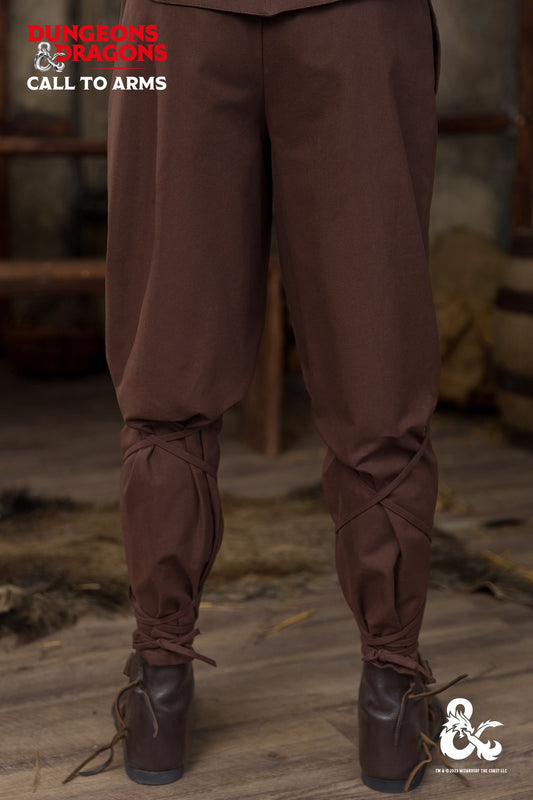Collection: Garments
-
Shirt Tristan Natural
4.5 / 5.0
(2) 2 total reviews
Regular price €34,90 EURRegular priceUnit price / per€0,00 EURSale price €34,90 EUR -
Coif Bertram Natural
5.0 / 5.0
(1) 1 total reviews
Regular price €14,90 EURRegular priceUnit price / per€0,00 EURSale price €14,90 EUR -

 Sale
SalePants Rubus Natural
5.0 / 5.0
(1) 1 total reviews
Regular price From €20,93 EURRegular priceUnit price / per€29,90 EURSale price From €20,93 EURSale -
Pants Landsknecht Black Red
5.0 / 5.0
(3) 3 total reviews
Regular price €49,90 EURRegular priceUnit price / per€0,00 EURSale price €49,90 EUR -
Dungeons & Dragons Rogue Gaiters Black
5.0 / 5.0
(1) 1 total reviews
Regular price €19,90 EURRegular priceUnit price / per€0,00 EURSale price €19,90 EUR -
Pants Wigbold Black
Regular price €49,90 EURRegular priceUnit price / per€0,00 EURSale price €49,90 EUR -
Thorsberg Pants Ragnar Black
Regular price €39,90 EURRegular priceUnit price / per€0,00 EURSale price €39,90 EUR -
Basic Trousers - Black
Regular price €25,90 EURRegular priceUnit price / per€0,00 EURSale price €25,90 EUR -
Under Tunic Leif Natural
5.0 / 5.0
(1) 1 total reviews
Regular price €34,90 EURRegular priceUnit price / per€0,00 EURSale price €34,90 EUR -

 Sold out
Sold outShirt Lonicera Natural
Regular price From €20,93 EURRegular priceUnit price / per€29,90 EURSale price From €20,93 EURSold out -
Short Sleeve Tunic Aegir Grey
5.0 / 5.0
(1) 1 total reviews
Regular price €39,90 EURRegular priceUnit price / per€0,00 EURSale price €39,90 EUR -
Viking Trousers - Black
5.0 / 5.0
(1) 1 total reviews
Regular price €39,90 EURRegular priceUnit price / per€0,00 EURSale price €39,90 EUR -
Pants Wigbold Brown
Regular price €49,90 EURRegular priceUnit price / per€0,00 EURSale price €49,90 EUR -
Laced Shirt Störtebecker Natural
Regular price €39,90 EURRegular priceUnit price / per€0,00 EURSale price €39,90 EUR -
Pirate Shirt Black
Regular price €34,90 EURRegular priceUnit price / per€0,00 EURSale price €34,90 EUR -
Dungeons & Dragons Ranger Trousers Brown
Regular price €49,90 EURRegular priceUnit price / per€0,00 EURSale price €49,90 EUR
Live Action Role Play is a hobby of many facets so that´s why our goal is to bring a wide range of medieval clothing and garb.
No matter if you want to prepare for a fantastic LARP or medieval market, here you can find the right medieval garb for sure.
Our range of products reaches from normal medieval clothing like landsknecht shirts and trousers, Gambesons, Coifs, Girdles, Corsages and Petticoats.
Often the small things are the once, which makes LARP clothing an extraordinary, that´s why we offer so many accessories and jewelry. Doesn´t matter if it´s a Celtic bracelet or a zodiac charm you´re searching for, on Your-LARP-Store you´ll find it.
And because medieval clothing reaches from head to toe we have an outstanding collection of medieval shoes ready for you.











